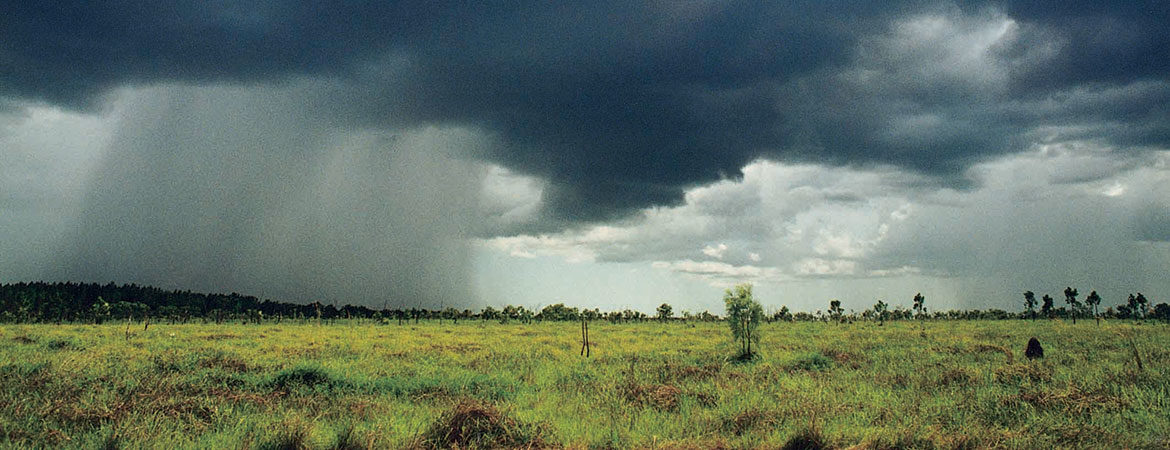22 June 2018
With reliable access to water being critical for the development of northern Australia, it’s essential that we understand future rainfall for the region. However, climate change means that northern Australia’s past climate is no longer a reliable indicator of future climate conditions.
Hub researchers are investigating the processes that influence rainfall in northern Australia, so we can better understand how they are changing and what this means for the timing and amount of rainfall.
What we’ve seen already
There’s been a slight increase in rainfall over northern Australia since 1970, but this was largely confined to the north-west: rainfall over northern Queensland decreased during this period. The wetting trend in the north-west is thought to be mainly due to natural variability. This variability – from year to year and decade to decade – plays a significant role in the north’s rainfall and is strongly influenced by El Niño-Southern Oscillation. The increase in rainfall over the north-west may also have been influenced by greenhouse gases and aerosols (tiny airborne particles of soot and dust) from industrial pollution across Asia and globally.
What’s in store for the future
While the picture for average rainfall is unclear – some climate models show increases while others show decreases – we are confident that this century will bring even more variable rainfall, and that heavy downpours will become heavier.
This has important implications for planning decisions. Rainfall-sensitive projects and industries in Northern Australia will need to include the possibility of both increases and decreases in future average rainfall amounts. It will also be important that tolerances for extreme rainfall events, such as flooding, are increased.
The bigger climate picture
Of course, rainfall changes are not occurring in isolation. Associated with ongoing increases of carbon dioxide and other greenhouse gases in the atmosphere, Northern Australia can also expect:
- Increasing average temperatures
- More hot days and warm spells
- Increasing mean sea level
- Increasing extreme sea level heights (such as storm surges)
- Fewer but more intense tropical cyclones.
Understanding climate-related risks
With climate underpinning almost every aspect of our lives, climate change will have consequences across many sectors, including:
- increased human health risks due to increasing number of hot days and heat waves
- damage to cultural sites and loss of natural resources important to Indigenous communities
- impacts on grazing, cropping and agriculture expansion due to changes in rainfall and drought
- damage to infrastructure from floods
- damage to the Great Barrier Reef due to ocean warming and acidification
- changes to ecosystems, such as the expansion of eucalypt savannah and grassland.
With such wide-ranging impacts, climate change needs to be considered as an integral part of a risk analysis in policies and decisions about northern Australia.
It is important to note that many impacts will not be as great under lower greenhouse gas concentrations, so reducing emissions is important.
Climate change science to inform policy and decisions
Climate change information is critical to help deal with the impacts that are unavoidable. Some of these management and policy decisions will require detailed climate change information, but others will only need more general information.
The Earth Systems and Climate Change Hub’s work is improving our confidence in climate change projections and is increasing our understanding of how the climate system works. The Hub is working to make climate change information more user-friendly, so it can more easily be applied to risk assessment and adaptation activities.
Read more: Our changing climate: How will rainfall change in northern Australia over this century?
Main image credit: Mike Rosel, Bureau of Meteorology

